Athens, Georgia is an interesting place, about 70 miles from downtown, Atlanta. Some notable people from Athens include Kim Basinger, Jeff Daniels, both actors, and Fran Tarkenton, Hall of Fame Quarterback. Well know places include, State Botanical Gardens of Georgia, University of Georgia Campus and Arboretum, and Georgia Museum of Art. The Georgia Theater is also well known across the music community.
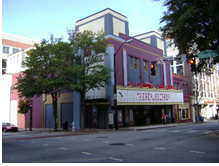
But there’s also another kind of theater, one that attracts friends and family around a backyard Lang Smoker Cooker and in this case, that would be Dan Williams a private Lang owner. Dan spent some time talking to us about his Lang and bbqing, just in time for Thanksgiving.
Lang: What drove you to get into barbeque?
DW: I’m from the south so I grew up on bbq like anyone here. In college I worked at a bbq restaurant just to learn a bit more about smoking meat.
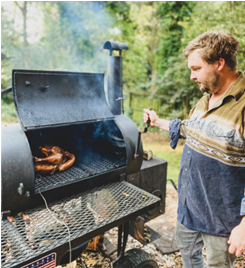
Once I got married, I knew I wanted a great stick burner to cook on and quickly found the Lang. My in-laws happen to be from near Nahunta, and they purchased the Lang for us as a Christmas gift.
Lang: Were you cooking before you started to barbeque?
DW: I’ve been doing bbq and cooking about the same length of time, though I’ve done much more since I’ve been married and have a good house for it.
Lang: What makes your barbeque meals unique?
DW: Among Langsters, I suppose I may harp on the types of wood I’m using more than some others. I really get into mixing and matching the right woods for the meat I’m working with. Wood should be chosen based on what’s regionally available.
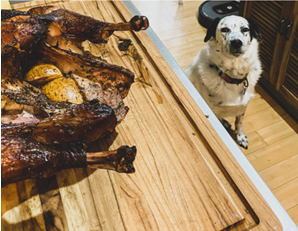
Hubble, hoping for a snack of finished turkey, that was stuffed with apples during the cook
If you’re a home cook like me and don’t need to go through cords of wood a month, then you should be able to find wood to cut yourself and generally not pay for it. I have a chainsaw and a wood splitter that allows me to procure most of the wood I need on my own. Here in north Georgia, there is plenty of pecan, oak and sometimes hickory and cherry to be found. On Facebook marketplace, there’s always someone who has cut down a tree and will let you haul of some wood for free.
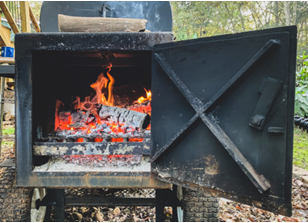
Lang: How did you go about getting into barbeque cooking?
DW: Again, I’m from the south. Down here, everyone except vegetarians eats bbq sometimes and most men and some women have some way to smoke a pork butt or some ribs. Like most Langsters, I just took it a bit more seriously. I am also interested in the history of bbq which in the deep south goes back to slave cooking. For a quick and fun read, I recommend Jim Auchmutey’s “Smoke Lore” from UGA Press.
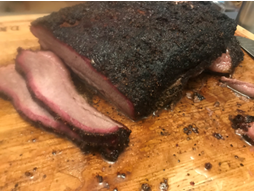
Brisket sliced and ready to delight
Lang: Can you share some of your cooking techniques?
DW: Generally, in cooking I don’t do recipes. I believe in understanding the fundamentals of cooking. Once you understand those, you build on them in what you do and you can only use recipes to fill in the blanks, or for ideas. This applies to bbq as well. Once you understand fire management, varieties of hardwood, how to make rubs and other things, you don’t need someone giving you step-by-step instructions to do good bbq. And you’ll only learn to make great bbq by doing and learning from mistakes.
Lang: Did you face any pitfalls you didn’t expect when you started cooking?
DW: One thing I had to get used to was keeping the Lang clean. That’s one of many areas the Lang Smoker Owners Facebook group has been helpful, as people have great tips for this.
Lang: What Lang model do you have and why?
DW: Lang 36” patio. I just need the basics. I can see why other features that come on Langs are great, but the greatest number of people I’d ever need to feed at once is around 30, and I can handle that with my 36.” The only feature I may get if I had to re-order would be pneumatic wheels on all four legs.
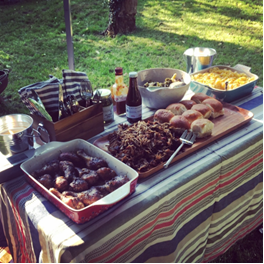
Smoked chicken legs, pulled pork made from shoulder from Frolona Farms; local sauces and fixins
Lang: What are a few of the ways you use your Lang?
DW: Anytime we have folks over I’ll do some kind of bbq. Sometimes I take orders from coworkers and cook for them over a weekend and bring it to them on a Monday. They’ll usually order pulled pork or ribs that will provide one or two meals for their families. For special occasions like the holidays, I may do something upscale like a prime rib. I hot-smoke wild caught salmon each Thanksgiving now, along with turkeys of course.
Lang: What features do you like best about Lang?
DW: The efficiency of cooking that a well-built stick burner gives you. Once you know the fundamentals, it’s not hard to manage your temperatures to get the results you want.
Lang: Do you have any insights about Reverse Flow?
DW: I don’t have a standard stick burner to compare to, so honestly, I only know it makes sense to me that smoke moving both ways is effective, particularly when cooking on both racks.

Two pork butts and a turkey gillin’ away
Lang: Do you have a main goal as a cook?
DW: Generally, I like to cook meals at home that my wife enjoys. Cooking is one of the main things I can do for her. When it comes to bbq, I only want to make bbq that people enjoy and hopefully think is better than what they’re used to. Occasionally it’s good to cook something that really makes people say that it’s one of the best they’ve ever had of that item.
Lang: What are the favorite meals you like to prepare and why?
DW: We’re in Georgia, so pulled pork is the most common thing I will cook because it’s what people want and expect. I look forward to doing turkeys on Thanksgiving and maybe once or twice other times in the year. Turkeys are one item I believe I have come close to perfection.
Lang: What can you share about the BBQ community as a whole?
DW: Bbq has really exploded in popularity during the last decade. Being from Alabama, I’ve always kind of been into it; so, I can see some good and bad in the recent popularity and “scene” that now exists. The good is that it’s a great way for people to cook outdoors. For the people who are interested in cultural and historical context, and not just the food itself, it’s also a great way to learn about our food heritage, particularly what Black Americans have contributed to southern cuisine or what immigrants contributed in a place like Texas.
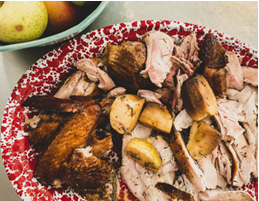
Carved turkey on a platter
The bad is that we’re losing our regional food identities, and with increased demand, there’s just a lot of mediocre bbq getting served out there. At the same time, “new school” restaurants that serve bbq from any old region pop up, and competition bbq continues to grow. We’re losing some of the stalwart local places, even famous ones, in places like North Carolina’s piedmont that do bbq in a certain way, perfected over many generations. If people in bbq don’t start caring more about regional traditions and what matters about them, we’re going to lose some of what makes bbq special in America.
Lang: That’s a very interesting take. Can you speak to any others?
DW: There are some millennials like me that seem to really care about these things, including some chefs opening bbq restaurants that care about continuing a regional bbq tradition, like Buxton Hall in Asheville. Organizations like the Southern Foodways Alliance are also trying to document what’s important about bbq in all of these various regions and profiling the key restaurant players in those places in the south. One of my favorite blogs, BarbecueBros.co, is run by some young guys who are just friends and like to write about regional bbq traditions and restaurants, particularly in the Carolinas which, in my view, is where we should start when talking about pork bbq.
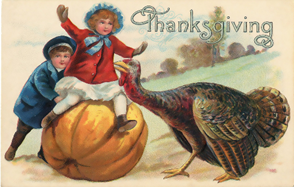
A vintage postcard
Lang: Can you share a recipe with us?
DW: Since we’re so close to the holiday–Turkey!
I mixed and matched methods on turkey until I got them really right. They don’t always turn out looking the prettiest, but they will taste great and won’t be dry, but will have very crispy skin.
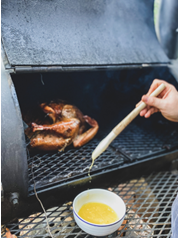
-Spatchcock the bird or not, works either way. Seems that most Lang folks don’t spatchcock but you can if it helps to use both racks for multiple birds.
– The night before cooking, dry brine the turkey. To do this, use kosher salt, pepper, brown sugar, granulated garlic and a little cayenne and baking powder. Rub under the skin and on top of skin as well.
-The day of cooking, mix melted butter and chicken stock and inject the bird, especially the breasts.
-Smoke at 300 for about 3 hours on the bottom rack.
-When the bird hits an internal temp of 130, place in a foil pan and brush with garlic butter.
-Pull at 165, and save the drippings from the pan. These can be used in a gravy or alone as a sauce to brush onto pieces of meat once carved.
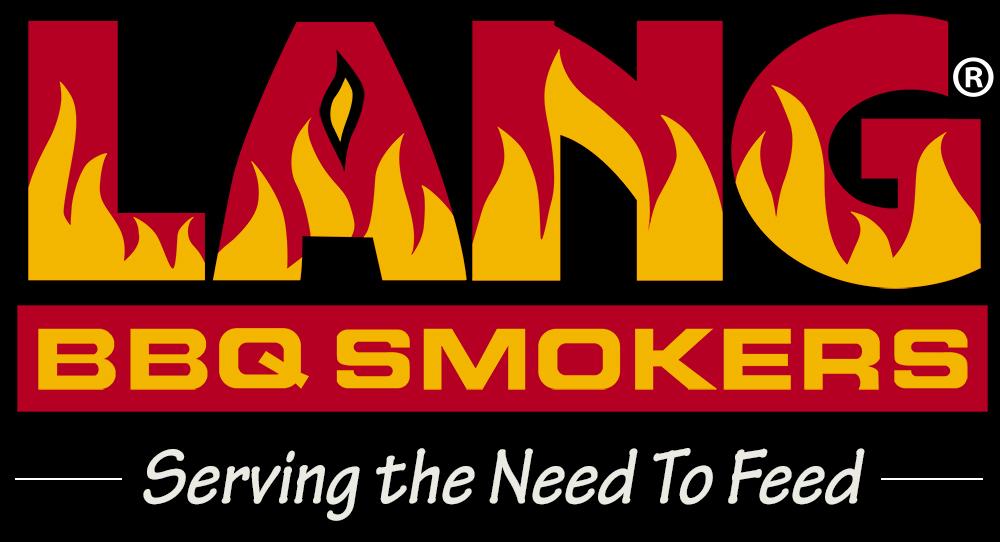

You are loved DAN
May he Rest In Peace, and his memory be a blessing to those who knew him ❤️
Nice interview, Dan. I also have a Lang 36″ Patio. I’m going to give your turkey recipe a try.
George
Massachusetts
I have eaten his smoked turkey! Outstanding!!!
I’ve eaten his smoked turkey!
Outstanding!!!